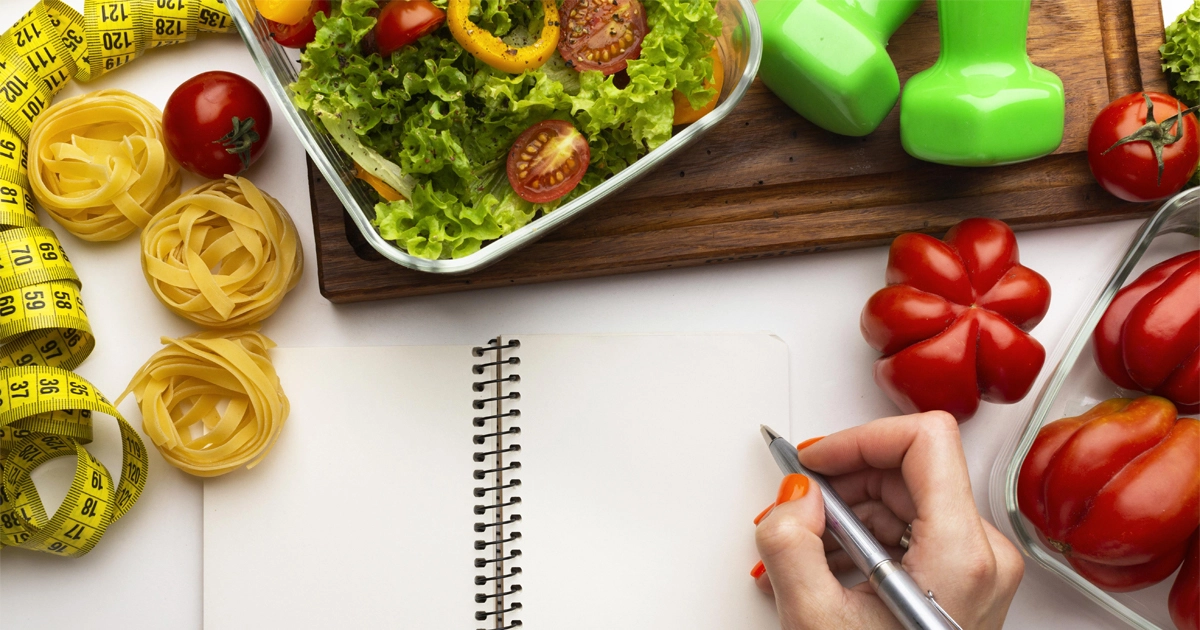Macros 101: How to Calculate and Track Macros for Lean Fat Loss Results
Why You’re Not Seeing Results — Until Now
You’ve cut the sugar, swapped takeout for salads, and show up to the gym with relentless dedication. And yet, the scale barely budges. Frustrating, isn’t it? Here’s a truth most diet plans won’t tell you: eating “healthy” isn’t always the same as eating for fat loss. The missing link? Macros. Understanding how macronutrients fuel your body can completely change how you approach your goals. Instead of guessing, you’ll finally know how to fuel your body for lean, lasting results. Let’s break it down.
Table of Contents
What Are Macros and Why Do They Matter for Fat Loss?
Understanding Macronutrients
Macros — short for macronutrients — are the three primary nutrients your body uses for energy:
- Protein: Helps repair muscle tissue and supports muscle growth.
- Carbohydrates: The body’s preferred energy source, especially for workouts.
- Fats: Essential for hormone regulation and long-term energy.
Each gram of macro provides a specific amount of energy:
- Protein: 4 calories/gram
- Carbs: 4 calories/gram
- Fats: 9 calories/gram
Balancing your macros properly can directly impact your body composition, energy levels, and fat-burning potential. Rather than just cutting calories, you’re giving your body the right type of fuel to function and perform.
How to Calculate Your Macros for Lean Results
Step 1: Determine Your Daily Caloric Needs
Before figuring out your macros, you need to know how many calories your body burns daily. Use the Mifflin-St Jeor Equation to estimate your Basal Metabolic Rate (BMR), then adjust for activity using a Total Daily Energy Expenditure (TDEE) calculator.
Example: A moderately active 30-year-old woman weighing 150 lbs may have a TDEE of ~2,000 calories/day.
Step 2: Choose a Macro Ratio That Matches Your Goals
For fat loss, the typical goal is to retain lean muscle while burning fat. That’s where macro ratios come into play.
Popular Macro Ratios for Fat Loss:
- 40% Protein / 30% Carbs / 30% Fats
- 35% Protein / 25% Carbs / 40% Fats (great for low-carb/Keto-style eating)
Sample Macro Breakdown
Let’s use the 1,800-calorie target as an example:
| Macro | Percentage | Calories | Grams |
|---|---|---|---|
| Protein | 40% | 720 | 180g |
| Carbs | 30% | 540 | 135g |
| Fats | 30% | 540 | 60g |
This formula offers structure without restriction. Instead of labeling foods “good” or “bad,” you’ll make choices based on how they fit into your daily macro targets.
Best Tools and Apps to Track Macros Efficiently
Tracking macros might sound time-consuming, but the right tools make it easy.
Top Macro Tracking Apps
- MyFitnessPal: Huge food database and barcode scanning.
- Cronometer: Great for accuracy and micronutrient tracking.
- MacroFactor: Adapts macros weekly based on real progress.
- Carb Manager: Ideal for low-carb or Keto-focused users.
Tracking Tips
- Weigh your food using a digital kitchen scale.
- Log meals immediately to avoid forgetting.
- Save your favorite foods and recipes for quick entry.
- Double-check entries — not all foods are logged accurately.
The goal is consistency, not perfection. Missing your target macros by a small amount won’t ruin your progress, but guessing every day will.
Macro-Friendly Meal Planning for Fat Loss
Creating a weekly meal plan that aligns with your macros doesn’t have to be a chore. Start with basic meals and adjust ingredients as needed.
Sample Daily Meal Plan (1,800 Calories)
| Meal | Ingredients | Protein (g) | Carbs (g) | Fats (g) |
| Breakfast | 3 eggs, 1 slice whole grain toast, ½ avocado | 21 | 20 | 22 |
| Lunch | Grilled chicken breast, quinoa, broccoli | 35 | 30 | 10 |
| Snack | Greek yogurt, blueberries, chia seeds | 20 | 18 | 8 |
| Dinner | Salmon, sweet potato, green beans | 40 | 35 | 15 |
Macro-Friendly Recipes
- Protein Smoothie: Almond milk, whey protein, banana, spinach, flaxseed
- Low-Carb Wrap: Turkey, egg whites, cheese, lettuce wrap
- Power Bowl: Grilled shrimp, cauliflower rice, avocado, salsa
Batch cook and portion out meals at the start of the week to stay on track without scrambling.
Tips to Stay Consistent With Macro Tracking
You don’t need to track macros forever, but doing so for even 4–6 weeks can build awareness that lasts a lifetime.
Consistency Tips:
- Set reminders to log meals.
- Meal prep 2–3 days in advance.
- Plan meals around your protein goal.
- Use templates: breakfast, lunch, dinner with rotating ingredients.
- Give yourself grace — some days won’t be perfect, and that’s okay.
It’s the average of your habits that determine your success, not one meal or one day.
Common Macro Tracking Mistakes (And How to Avoid Them)
If you’re not seeing progress, one of these missteps might be the culprit:
- Guessing portion sizes: Always weigh or measure.
- Skipping logging oils and dressings: These can add 200+ calories fast.
- Using inaccurate app entries: Double-check user-added foods.
- Not adjusting macros as you lose weight: TDEE changes as your body changes.
- Forgetting small bites and sips: Those licks and tastes add up.
Track honestly, learn from the data, and tweak accordingly.
Real-Life Success Stories: How Tracking Macros Changed Lives
Samantha, 34: “I thought I was eating clean, but I was under-eating protein and overdoing fats. Once I tracked, I dropped 12 pounds in 8 weeks and felt stronger than ever.”
James, 42: “Macro tracking gave me control. I lost 20 lbs without cutting out my favorite foods. It’s the most sustainable approach I’ve tried.”
Lina, 27: “I stopped fearing carbs. Once I balanced my macros, my cravings disappeared. Game changer!”
Their stories show what’s possible when you stop guessing and start measuring.
Frequently Asked Questions About Tracking Macros for Fat Loss
How do I know if my macro ratio is right for fat loss?
Watch your progress over 2–3 weeks. If you’re not seeing results, slightly reduce carbs or fats while keeping protein high.
Can I lose fat without tracking macros?
You can, but macro tracking accelerates awareness. It teaches you how to fuel your body strategically.
What if I go over on one macro?
Going over occasionally is okay. Aim for overall calorie alignment. Prioritize hitting protein and stay mindful of carb/fat balance.
Should I change macros on rest days?
Some people lower carbs slightly on rest days, but consistency works too. Focus on weekly averages more than day-to-day tweaks.
Conclusion: Master Your Macros, Transform Your Body
You now hold the blueprint. By calculating your macro needs and tracking them consistently, you move from vague dieting to precise, powerful nutrition. No more guessing, no more spinning your wheels. Just results.
Macros give you the flexibility to enjoy your food, the structure to stay on track, and the knowledge to take control of your health for good.
Ready to Get Started?
Choose a tracking app, calculate your macros, and plan your first day of meals. Make this the week everything changes. You deserve to feel lean, strong, and in control.

